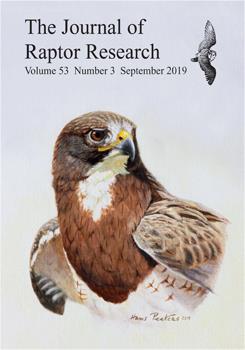Red-tailed Hawks (Buteo jamaicensis) are common across North America and are well-adapted to human-altered landscapes. Yellowstone National Park offers an opportunity to study this nearly ubiquitous species in a relatively unaltered and intact temperate ecosystem. In anticipation of future habitat and environmental change, we monitored Red-tailed Hawk territories and nests across the park's northern range to establish a baseline of hawk density, reproduction, and population status. We used a combination of intensive territory monitoring at two different scales and roadside point count surveys, analyzed using detection-dependent density modeling. From 2011 through 2015, we monitored between 17 and 44 territories each year and, in total, documented at least 60 territories in the northern range. Territory density across the northern range was comparable with other regional estimates, but local density was particularly high on the Blacktail Deer Plateau. On average, 87% of territorial pairs (range: 75–100%) laid eggs and breeding success averaged 63% (range: 48–89%). Hawk reproductive rate averaged 1.07 (range: 0.46–1.74) young per occupied territory and brood size averaged 1.73 (range: 1.30–1.96) young per successful nest. Reproductive rate varied significantly between study years but on average was well below the level thought necessary for a stable population, underscoring the importance of continued monitoring to better understand the drivers of population trends.
How to translate text using browser tools
13 August 2019
Reproductive Characteristics of Red-Tailed Hawks in Yellowstone National Park, an Intact Temperate Landscape
Lauren E. Walker,
Lisa M. Baril,
David B. Haines,
Douglas W. Smith
ACCESS THE FULL ARTICLE

Journal of Raptor Research
Vol. 53 • No. 3
September 2019
Vol. 53 • No. 3
September 2019
breeding
Buteo jamaicensis
nesting
population
red-tailed hawk
reproduction
survey




